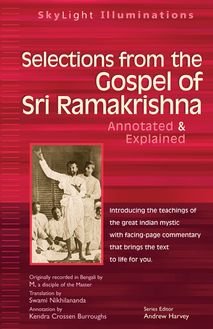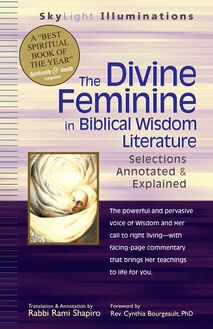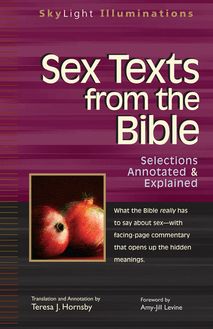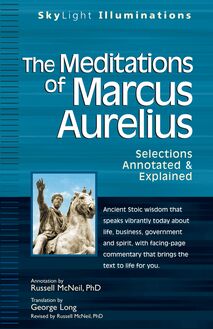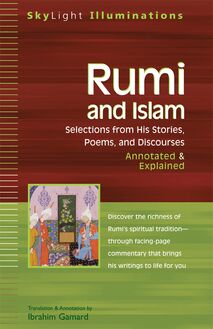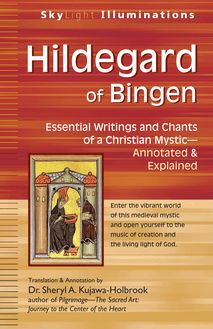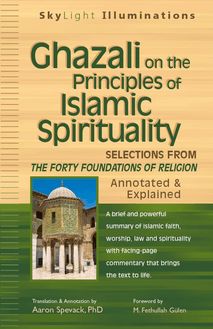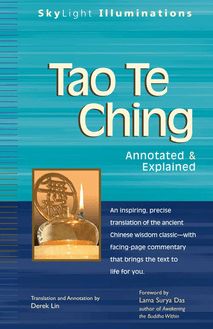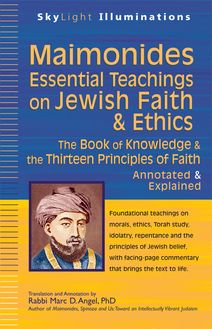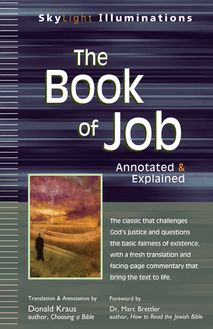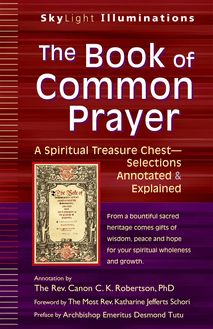The Book of Common Prayer , livre ebook
95
pages
English
Ebooks
2013
Vous pourrez modifier la taille du texte de cet ouvrage
Obtenez un accès à la bibliothèque pour le consulter en ligne En savoir plus
Découvre YouScribe et accède à tout notre catalogue !
Découvre YouScribe et accède à tout notre catalogue !
95
pages
English
Ebooks
2013
Vous pourrez modifier la taille du texte de cet ouvrage
Obtenez un accès à la bibliothèque pour le consulter en ligne En savoir plus
Publié par
Date de parution
01 octobre 2013
Nombre de lectures
6
EAN13
9781594735578
Langue
English
This source of strength and solace for millions of Christian clergy and laypeople throughout the world can be a companion for your own spiritual journey.
For centuries, Christians of different traditions and seekers from various backgrounds have found strength for their spiritual journey in the Book of Common Prayer (BCP). First composed in 1549 by Thomas Cranmer, Henry VIII's Archbishop of Canterbury, the BCP, alongside Shakespeare's works and the King James Bible, helped shape the English language. Today almost eighty million Anglican Christians throughout the world use the BCP in public worship, and countless people—Anglican and otherwise—use it in their private devotional life.
In this unique presentation of selections—organized by themes such as "Blessings in Times of Joy and Pain," "Called to Serve" and “Praise and Petition”—with facing-page commentary, C. K. Robertson offers fascinating insights into the history and heritage of the BCP. He also makes available the riches of this spiritual treasure chest for all who are interested in deepening their life of prayer, building stronger relationships and making a difference in the world.
Foreword vii
The Most Rev. Katharine Jefferts Schori
Preface ix
Archbishop Emeritus Desmond Tutu
Introduction xi
1. A Life of Prayer 1
2. Belonging and Building Relationships 45
3. Blessing in Times of Joy and Pain 93
4. Called to Serve 119
5. Praise and Petition 145
Using the Prayer Book as a Spiritual Tool 167
Suggestions for Further Reading 170
Publié par
Date de parution
01 octobre 2013
EAN13
9781594735578
Langue
English
Thank You For Purchasing This Skylight Paths eBook!
Sign up for our e-newsletter to receive special offers and information on the latest new books and other great eBooks from SkyLight Paths.
Sign Up Here
or visit us online to sign up at www.skylightpaths.com .
Looking for an inspirational speaker for an upcoming event, conference or retreat?
SkyLight Paths authors are available to speak and teach on a variety of topics that educate and inspire. For more information about our authors who are available to speak to your group, visit www.skylightpaths.com/page/category/SLP-SB .
To book an event, contact the SkyLight Paths Speakers Bureau at publicity@skylightpaths.com or call us at (802) 457-4000.
Contents
Foreword
The Most Rev. Katharine Jefferts Schori
Preface
Archbishop Emeritus Desmond Tutu
Introduction
1.A Life of Prayer
2.Belonging and Building Relationships
3.Blessing in Times of Joy and Pain
4.Called to Serve
5.Praise and Petition
Using the Prayer Book as a Spiritual Tool
Suggestions for Further Reading
About the Authors
Copyright
Also Available
About SkyLight Paths
Sign Up for Email Updates
Send Us Your Feedback
Foreword
The Most Rev. Katharine Jefferts Schori Presiding Bishop of the Episcopal Church
Episcopalians and Anglicans claim to be related by shared prayer, rather than by a list of beliefs. We are people of common prayer, both in the sense of shared prayer and in the sense of prayer that sees the holy in the everyday. Our prayer has particular contextual roots in the early Celtic Christian forms that offered prayers for milking cows and plowing fields, blessings for boat journeys and walking ones, and richly beautiful language that invokes a sense of God s presence in all times and places. Our prayer is common and continual, through the hours of the day and the changes and seasons and chances of this life.
The Book of Common Prayer was originally a way to seek healing among a divided people, and it continues to serve that holy purpose-being used today by people and congregations who are not avowedly Anglican but find the meter and imagery of its prayers to be holy and formative. God is working a small reconciliation of the larger body of Christ through these shared prayers. The reader will discover something of the diversity of the Prayer Book tradition, both historically and in today s global Anglican Communion.
Canon Robertson brings a deeply pastoral sense to guiding the reader through the riches of the Episcopal Book of Common Prayer, repeatedly pointing to ways in which it can undergird the spiritual discipline and formation of individuals, families, and communities. This is a resource that invites, encourages, educates, and makes rich connections for the seeker. There is treasure abundant here and deeply fertile possibility for forming a more honest, thankful, and joyful spiritual life in one who begins to use it regularly.
The ancient riches here are also new every day of one s life. Structuring time around regular prayer grounds life in relationship with the holy and imbues all of life with a sense of gratitude and hope. Those patterns were honed by monks and nuns through the ages, but they have their ancient roots in Hebrew tradition. Robertson offers a remarkable gift in the intimations that Thomas Cranmer or Queen Elizabeth I wrote or prayed a particular passage-giving an inkling of what leadership or pastoring or simply faithful living and endurance were like in a particular age. It gives a far more expansive view than what we usually receive through the external data of history-wars, convulsions, rebellions, and the like, rather than the private prayers of those who lived and led through them. That becomes a deeply hopeful resource for those who pray today.
Grounding one s life in regular rounds of prayer can connect us with Jesus s own life and ministry and permit us as well to see the hand of God at work in the world about us. 1 That may be in giving thanks for food to eat, or the blessing prayed over newlyweds, or in encouraging our concern and response toward those in need and God s wider creation.
This is a resource for life-all of life-and Robertson offers a robust and creative invitation to enter, explore, and use the deep wisdom of the Book of Common Prayer in your own life and that of your community. As one of the prayers of this tradition says, read, mark, learn, and inwardly digest this rich food, born of relationship with God through the ages, and find your life transformed.
1.Proper 28 from the Collects of the Church Year, The Book of Common Prayer (New York: Episcopal Church), 236.
Preface
The Most Rev. Desmond Tutu Archbishop Emeritus of Cape Town & Nobel Peace Laureate
It is a wonderful thing to pray. And it is a more wonderful thing to pray together! God loves diversity and God loves unity, and when the two merge, unity in diversity and diversity in unity, then something truly miraculous can occur. This is at the heart of common prayer-different people of all types coming together and embracing God. In this latest volume in the SkyLight Illuminations series on sacred texts, Dr. Robertson makes much of the term common prayer. He shows how Anglican Christians have relied on common prayer, not agreement on doctrines or unanimity in ideas, to stay connected to one another.
God made us all different so that we can come to know how we need one another. Archbishop Thomas Cranmer, who oversaw the creation of the first Book of Common Prayer, and all those who have revised it at different times and in different places, understood this simple truth. We need each other. And because all of us are by nature worshipful, when we worship together we are the richer for it. It is little surprise that when some people choose to break away from their sisters and brothers in faith, one of the first things they do is cease to pray together.
I have often said that we realize our human potential only when we truly reach out and accept one another and accept our need for one another. This is why I invited P. W. Botha, the president of South Africa during some of the darkest times of apartheid, to join our side, to join the imprisoned and persecuted, because in God s moral universe we had already won. Common prayer means inviting both our friends and our enemies to join us in worshipping the God who loves not just some of us, but all of us.
I previously contributed a preface for another of Dr. Robertson s books, A Dangerous Dozen: Twelve Christians Who Threatened the Status Quo but Taught Us to Live Like Jesus (SkyLight Paths). Those twelve Christians who challenged their respective power structures were very different people in very different contexts, but they all shared not only a passion for God s peace and justice, but also a strong and healthy prayer life. They, and many others like them, went to God in adoration, in contrition, in thanksgiving, and in supplication because they knew that this is where they would find their strength for the challenges that awaited them.
Whether it is Cranmer s 1549 Book of Common Prayer, the Aotearoa/New Zealand Prayer Book, or my African Prayer Book , what we find in these treasure chests are spiritual gems from many different sources which, when put together, form a wonderful unity ... much like the people who make use of them. It matters not if you offer these prayers together with others or alone, for every time you pray with humility and a thankful heart, you are praying in common with all those other humble, thankful children of God.
So enjoy this study of a very special, important text, The Book of Common Prayer. Lose yourself in words both ancient and fresh. Find yourself in relationship with God and with others who share your common needs, hopes, and prayer. And in the end, as the great African bishop and saint Augustine of Hippo promised, All shall be Amen and Alleluia.
God bless you.
Desmond
Introduction
So that here you have an order for prayer (as touching the reading of the holy Scripture), much agreeable to the mind and purpose of the old fathers, and a great deal more profitable and commodious, than that which of late was used.
Preface to the 1549 Book of Common Prayer
It is a book born in the fires of reformation and revolution, and yet it emphasizes continuity and harmony. Its very title points to the goal of common prayer-a double entendre, intentional or otherwise-alerting any who would open its pages that this work is for all, whatever one s status or station, be it priest or layperson. And it is a book that is for all together. For centuries, Christians of different traditions and seekers from various backgrounds have found both strength and solace in the pages of The Book of Common Prayer (BCP).
What is it about this book that has made such an impact in the lives of so many? What s so special about The Book of Common Prayer, and perhaps more to the point, how can it prove useful to you on your own spiritual journey?
First composed in 1549, the Prayer Book, alongside Shakespeare s works and the King James Bible, helped shape the English language. Having been revised several times through the years to account for different local contexts, today it is used in one form or another by almost eighty million Anglican Christians throughout the world. Its familiar words and rites for marrying and burying have become part of our culture, often borrowed by other religious traditions and commonplace in Hollywood films and television. Presidents, monarchs, and Nobel laureates; poets, musicians, and comedians; peacemakers and change agents alike are among those who have claimed the Prayer Book and its spiritual treasures for their own.
A
